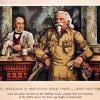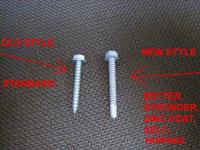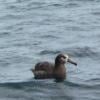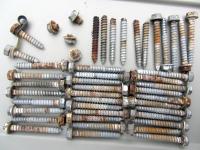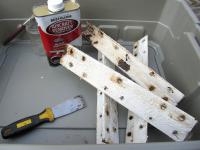(Note- the title says jack plates but I meant jack brackets)
Hi, all-
I've just finished stripping and painting the jack brackets on my 01 Hawk and am ready to put them back on. These are the older one-piece brackets attached with lag screws. I had noticed a few screw-heads broken off but by the time I got the brackets off, I had a total of 10 of the 48 screws broken off at the head due to rust.
The thread http://www.wanderthe...rusty-brackets/ covers this topic pretty well and provides a photo of the more durable screws used by FWC since about 2010. (see photo below)
I made the mistake of going to my local Fastenal and coming back with a few #14 self-tapping screws like that in 410 stainless steel (the only thing they had in stock than plain steel). Fortunately, I was curious about the differences in stainless steel materials and that led me to http://www.preservat...metals/PGC.html . The table shows 410 stainless steel would not be a good choice.
Does anyone have detailed specs or part numbers on the newer screws (or other recommendations)?
Also-- any tips on using the self-tapping screws in the threads created by the lag screws? I note, for example, both lag screws and the self-tappers don't necessarily like to go in straight.
-OC
Edited by Old Crow, 02 August 2015 - 02:24 PM.


